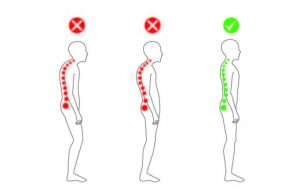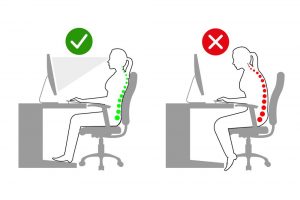How will we be protected from hump?
- Tolgay Şatana
- Oct 18, 2022
- 4 min read

How will we be protected from hump?
Standing upright, not bending over, self-confidence is perceived in our culture as an expression of arrogance and even challenge. So much so that the correct posture and walking are described as the expression of beauty in the expression of femininity.
The paintings of Frida, the famous female painter with a splintered spine, while writhing in pain, worry that she will not be beautiful again.

If you say to a little girl, “Come on be ugly to me,” it will be complementary to the resentment - repulsion on her face, even the ugly expression on her face, while moving her shoulders forward and slightly tilting her head forward. So, if we do not have a congenital defect, we can make our appearance more impressive or ugly by using our spine correctly.
A proper spine structure provides a balanced weight distribution of the main skeleton and is necessary for the harmonious functioning of the movement system. The concave alignment, which we call lordosis in the neck and waist region, is located in the convex area, which we call kyphosis in the back and coccyx region. Note that Lordose is a mechanical requirement for weight bearing and weight distribution of kyphosis in bipedal creatures.
The definition of "BIPED" in English, which means bipedalism, also means a living being that can perceive biological intellectual philosophy, a well-footed vertebrate stance is also an expression of intelligence, consciousness and is used to express affect easily. Beautiful and intelligent people can express this with their posture.
This is why we take our hunch out when we are troubled, or when we are crushed, when we ask for forgiveness, we hump ourselves while expressing ourselves.
When breast development begins in young girls, the tendency to increase humpback by highlighting the shoulders created by the feeling of embarrassment is also a voluntary hunchback choice.
If we can manage the hump in our back, how should we fight against it?
If we have a structural (spinal wedging, fractures), developmental (growth cartilage problems) or congenital (dwarfism, cartilage and muscle diseases) spinal problem that causes curvature, scoliosis is one of them, which is the most common with rotation. treatments will be required. Since congenital humpbacks are often seen together with rheumatic diseases, dwarfism, and metabolic problems, they first face the treatment of the main disease at an early age. Scoliosis - kyphosis cases, which we call idiopathic, generally refer to the physician with one shoulder down and the hump is noticed from the outside.
Kyphosis without scoliosis in the back area, which is true humpback, is mostly due to posture disorders.
In the developmental age, wrong posture, carrying heavy bags, weak muscle structure, and shy posture in girls are the most common causes. The use of desktops, laptops and smartphones in adulthood seriously affects the spine posture and triggers hunchback. The back spine alignment, which transfers loads to the shoulders and arms or connects the load on the arms to the main skeleton, is closely related to the arms. With the shoulder coming forward, the hump increases. The dorsal vertebrae can increase humpback, similar to the relationship between the neck and the head.
The flattened neck spine of a person working by approaching the computer screen is balanced by a hunchback on the back. If you have a neck hernia, a hump may develop on our back. The flattening that occurs in the lumbar region will again change the alignment of the back vertebrae in the direction of the hump. In cases of inequality between your legs, the spine alignment changes in the direction of the hump. All this is a tendency to get into some sort of steady state other than mechanical balancing.
The main skeleton responds to stress and disorder by increasing its hump, and if this is not temporary, the hump takes a permanent shape. You can visualize this form of defense by thinking about the state a cat takes when it gets caught in a corner. We get a steady state by removing our hump.
However, this is not healthy.
In daily life, the fact that young and mature people do not associate themselves with the shortening and hunchback that occurs with aging may also delay their taking precautions. The most common cause of curvature is bone loss and wedging of the vertebrae, which occurs in later years. However, this situation can be eliminated by proper nutrition that will strengthen bone metabolism at a young age or by being under the control of a physician during menopause.
Humpback that occurs with aging can turn into a progressive deformity, a serious health problem that narrows the rib cage, apart from a posture disorder. This situation creates a domino effect that disrupts health, such as the decrease in lung capacity, the tendency of the tissues to degenerate permanently without oxygen, deterioration of the vessel function and the deterioration of circulation. So if the hump is progressive it can cause fatal organ and system ailments.
How will we be protected from hump?
First of all, correct posture training is the first condition, all kinds of daily activities that are not ergonomic should be avoided or restricted. For example, we should catch the correct posture at the computer and our spine should be disciplined in this direction.
Activities to strengthen the back muscles of children: Activities using hands such as archery, yoga, basketball, handball should be encouraged. Regular exercises such as pilates and yoga are the most valuable investment to prevent humping despite bone loss in advanced ages.
Let's not forget that our skeletal health depends on the correct alignment of our spine, where alignment is maintained with solid bones and strong muscles.
Correct posture is essential for a healthy and happy life and is the most effective way of self-expression for a beautiful woman.










Comments